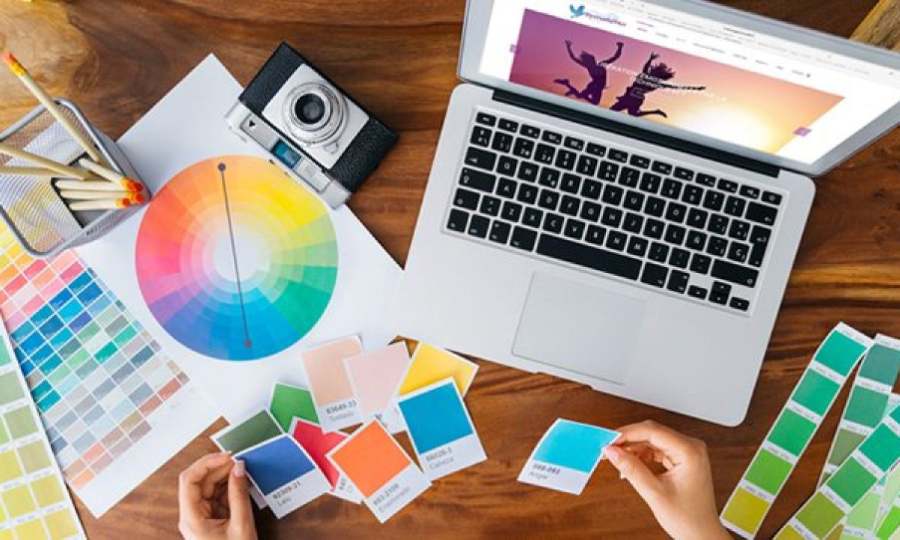Best Selling Products
Discovering Fundamentals of Fine Arts: A Solid First Step on Your Design Journey
Nội dung
- 1. Information you need to know about basic fine arts
- 1.1. Basic principles of fundamental art
- 1.2. Drawing and coloring techniques
- 1.3. Perception and space layout
- 1.4. Create emotions and convey messages
- 1.5. Tools and software in basic fine arts
- 1.6. Development and application in modern design
- 1.7. The role of fundamental art in the development of a designer
- 2. Fundamental Art: The Common Language of Great Designers
- 2.1. Fundamental Fine Arts – System of Basic Principles
- 2.2. Fundamental Arts – The Universal Language of Designers
- 2.3. The importance of fundamental art in developing design style
- 2.4. Creative freedom comes from a solid understanding of fundamental fine arts.
- 3. The most effective approach to the foundation of art
- 3.1. Start with basic theory
- 3.2. Practice and sketch
- 3.3. Research on classical and modern works of art
- 3.4. Do creative exercises
- 3.5. Explore and work with design tools
- 3.6. Join the community and learn from others
- 3.7. Continue to experiment and innovate
- Conclude
The basic principles of color, shape, proportion or light are also a solid foundation that helps each designer build their own style and overcome all creative challenges. Let's learn and explore the foundation of fine arts through the following article.
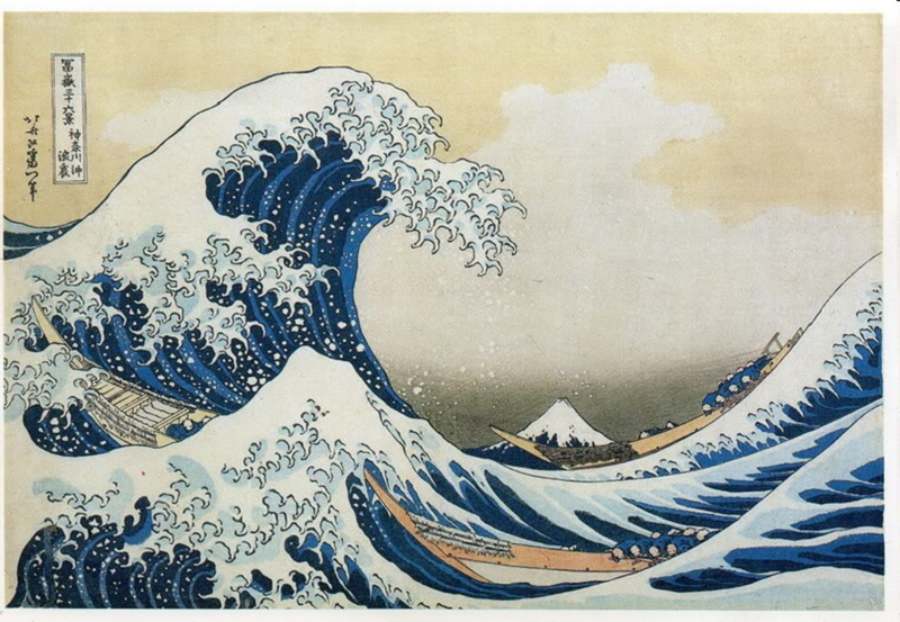
In the world of creative design, from graphic products, architecture, to fashion or web design, every designer needs a common language to express ideas and connect with the audience. And fundamental art is the key to open that door. These are not only the basic principles of color, shape, proportion or light but also a solid foundation that helps each designer build their own style and overcome all creative challenges. Let's learn and explore the foundation of art through the following article.
1. Information you need to know about basic fine arts
Fundamentals are the basic principles and techniques that every designer or artist needs to master in order to create complete, aesthetically pleasing and easy-to-understand creative products. Here is some important information to know about fundamentals:
1.1. Basic principles of fundamental art
- Color: Color is an important element in design, creating emotions and helping to highlight other elements in the work. Concepts to grasp include:
- Bảng màu (Primary colors, Secondary colors, Tertiary colors)
- Color contrast (complementary, analogous, triadic)
- Color temperature (warm vs. cool)
- Complementary and Opposite Colors: How to use opposite and complementary colors to create balance or highlight in a design.
- Shapes: Basic geometric shapes (squares, circles, triangles, etc.) are the structural elements in design. Clever combinations of shapes can create depth, balance, and emphasis. Shapes are not only aesthetically pleasing, but also help organize space.
- Proportion and composition: Proportion and composition help shape the arrangement of elements in a design so that they are harmonious and easy to see. Some basic principles to grasp:
- Rule of Thirds: A compositional method that helps create balance in an image.
- Golden Ratio: A natural ratio that helps create harmonious, pleasing compositions.
- Symmetrical and Asymmetrical Layouts: Use balance or playfulness to create interest and appeal.
- Light and Shadow: The use of light and shadow helps create depth and contrast. It can highlight elements in a design and create a sense of space.
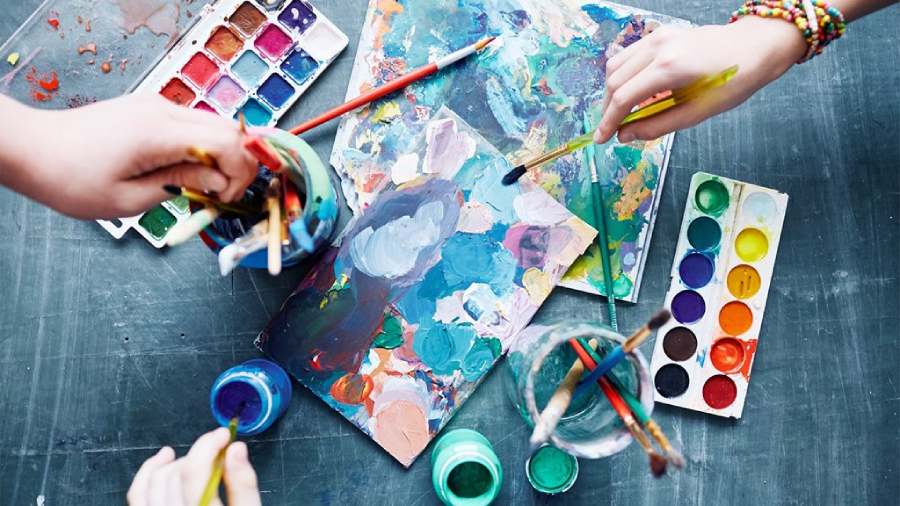
1.2. Drawing and coloring techniques
- Drawing techniques: Techniques such as sketching and cross-hatching help to express the brightness and gloss of an object.
- Coloring Techniques: Use watercolors, oils, acrylics, and coloring techniques like layering, blending to create diverse color and texture effects in designs.
1.3. Perception and space layout
Two-dimensional (2D) and three-dimensional (3D) space: It is essential to differentiate between flat (2D) and 3D design. Understanding how space is created will help you create designs that have depth, allowing viewers to perceive the vastness or smallness of objects.
Element Relationship: How elements such as shape, color, and scale interact with each other in a design space, creating harmonious connections or striking contrasts.
1.4. Create emotions and convey messages
Fundamental art is not only about using techniques but also about creating emotions. Elements such as color, light, and shape help convey emotions and ideas in each design. For example, red can represent energy and strength, while blue creates a sense of peace and trust.
1.5. Tools and software in basic fine arts

Today, many software tools are used to support design. Software such as Adobe Photoshop, Illustrator, CorelDRAW, or Sketch all provide powerful features that help apply basic art principles to reality. To work effectively, designers need to understand these features and how to apply them to optimize creative work.
1.6. Development and application in modern design
Fundamental fine arts not only play an important role in fields such as painting and sculpture, but are also a fundamental tool in all areas of modern design:
- Graphic Design: These principles help create engaging, accessible communications.
- Web and App Design: Foundational art helps build user interfaces (UI) that are logical, easy to use, and aesthetically pleasing.
- Interior design: Basic aesthetic principles help create comfortable and reasonable living spaces.
1.7. The role of fundamental art in the development of a designer
Not only a technical tool, fundamental art also plays a decisive role in the success of a designer's career. Mastering and creating from basic principles helps designers build their own style and be unlimitedly creative in their work.
2. Fundamental Art: The Common Language of Great Designers
2.1. Fundamental Fine Arts – System of Basic Principles
Fundamental art includes basic principles that every designer must master:
- Color: Color coordination, understanding the color palette and the feeling each color brings helps designers create harmonious and impressive works.
- Shapes and Structures: From basic geometric shapes like squares and circles, to more complex structures, understanding shapes is the way to create balance and aesthetics for any design.
- Proportion and layout: The golden ratio, the rule of thirds, or layout grids are essential tools for organizing space in a design that is logical and visually appealing.
- Light and Shadow: Use light to create depth, contrast, and highlight elements in your design.
These are the "golden rules" that every designer needs to master to build a solid foundation for their creative career.
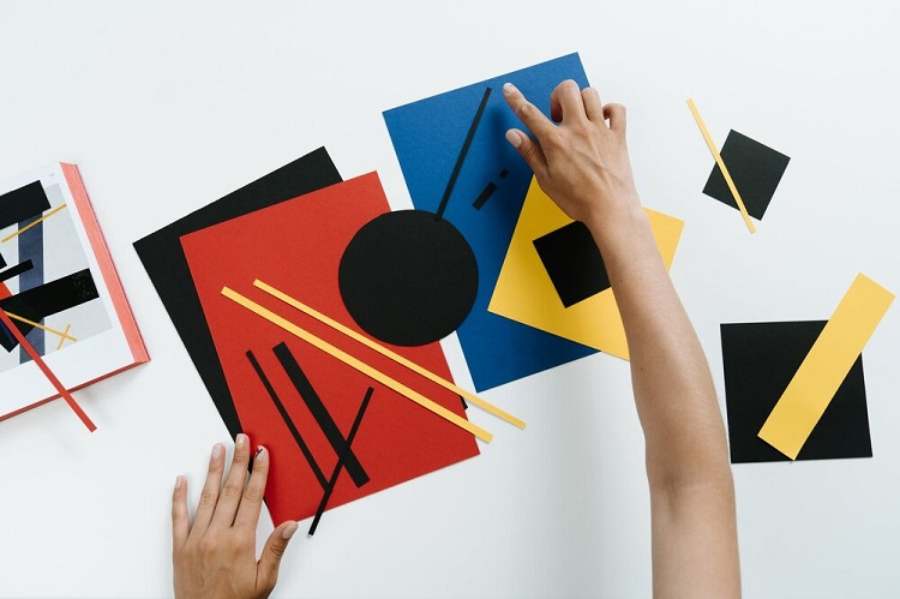
2.2. Fundamental Arts – The Universal Language of Designers
It’s no surprise that fundamentals are the common language of great designers, no matter what field they work in. Whether graphic designers, architects, painters, or fashion designers, they all rely on these basic principles to express ideas, emotions, and messages.
Just as a writer must use the right words to build a story, every designer must use fundamental aesthetic principles to create work that conveys the right message. It is a deep understanding of these principles that enables them to “speak” visually and have a powerful emotional impact on the viewer.
2.3. The importance of fundamental art in developing design style
Fundamental aesthetics not only make a design beautiful and understandable, but also provide the basis for each designer to develop their own style. A design can be endlessly creative, but without a solid understanding of the basic principles, it will become messy and lacking in aesthetics.
By understanding how to combine basic elements such as color, shape, and composition, designers can develop their own style, creating distinctive and recognizable work. This style will not only be a trend but also an identity, a personal mark that helps them stand out in a competitive creative industry.
2.4. Creative freedom comes from a solid understanding of fundamental fine arts.
One of the biggest misconceptions is that to be creative, designers need to “break” all the rules. However, true creativity comes from understanding the fundamentals and knowing how to apply them flexibly and creatively. Great designers know how to combine adherence to the fundamentals with personal expression, creating products that are both unique and balanced and aesthetically pleasing.
Fundamental art is the "key" to unlock creative freedom, allowing designers to create unique works while still maintaining harmony and appeal.
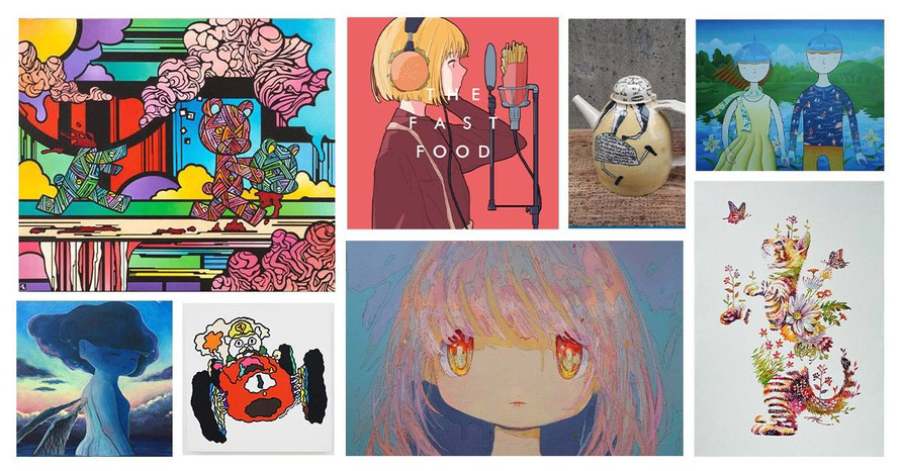
Fundamental art is not only a tool for designers to communicate their ideas, but also a solid foundation for developing their style and creative freedom. It is the common language of all creative people, helping them express their own personality in each product and connect emotionally with viewers.
To become a talented designer, mastering and understanding fundamental fine arts is not only an important factor but also a solid stepping stone for every creative, helping them to constantly move forward and make their mark in the challenging creative industry.
3. The most effective approach to the foundation of art
Exploring the fundamentals of fine arts is an exciting and challenging journey for those who love and pursue creative design. However, to truly understand and effectively apply the basic principles of fine arts, you need a systematic and persistent learning method. Here are some ways to explore and learn the fundamentals of fine arts:
3.1. Start with basic theory
To master the fundamentals of fine arts, the first thing you need to do is learn the basic theories about the elements that make up design:
- Color: Learn about color theory, color palettes, contrasting colors, complementary colors, and the psychological effects of color on viewers.
- Shapes and Proportions: Get familiar with basic shapes (circles, squares, triangles) and how they form design structures. Also learn about the golden ratio, the rule of thirds, and how to apply them to design.
- Composition: Learn how to arrange elements in a space to create harmony, balance, or focal point.
Start by reading books, materials, or taking basic courses in art and design to build a solid foundation of knowledge.

3.2. Practice and sketch
Fundamental art cannot be learned through theory alone but requires practice to understand and apply effectively. Sketching helps you:
- Understand Proportions and Forms: Sketching helps you better understand the relationships between design elements and how they interact in space.
- Practice observation skills: Drawing helps develop the ability to observe, perceive details and understand how light and shadow affect objects.
- Explore Creativity: Sketching gives you the freedom to experiment with form, style, and composition without being constrained by software or tool limitations.
To develop your drawing skills, try drawing simple objects first, then gradually move on to more complex compositions. Don't be afraid to experiment and be creative.
3.3. Research on classical and modern works of art
One effective way to explore fundamental art is to study works of art from famous artists. By analyzing these works, you will:
- Understand how art principles are applied: Learn how artists use color, light, shape, and composition in their works to create emotion and message.
- Learn from different styles: From classical to modern, each art style offers a different approach to the fundamentals of art. You can apply what you learn to your own style.
Visit museums, exhibitions, or view work online to broaden your horizons and learn from other artists and designers.
3.4. Do creative exercises
To put your fundamentals into practice, you need to practice through creative exercises. Here are some things you can try:
- Create a layout with geometric elements: Try creating a simple design with just basic shapes, then experiment with scale and color.
- Use color palettes: Choose a specific color palette and try creating a design or painting using only those colors. This helps you get used to color coordination.
- Analyze and copy works: Practice copying famous works (such as paintings, graphic designs) to understand how fundamental art principles are applied in practice.
3.5. Explore and work with design tools
Fundamental art is not only applied in hand drawing but also the basis for using professional design software such as Adobe Photoshop, Illustrator, Sketch or Figma. These software allow you to apply fundamental art principles into practice flexibly and effectively. You can:
- Using drawing and painting tools: Learn how to use the brush tool, color palette, and photo editing tools in the software.
- Apply composition and proportion principles: Practice creating layouts and using grids in design software to create harmonious designs.
- Explore special features: Many software offer features like blending modes, layer styles, and special effects that help you experiment and get creative.
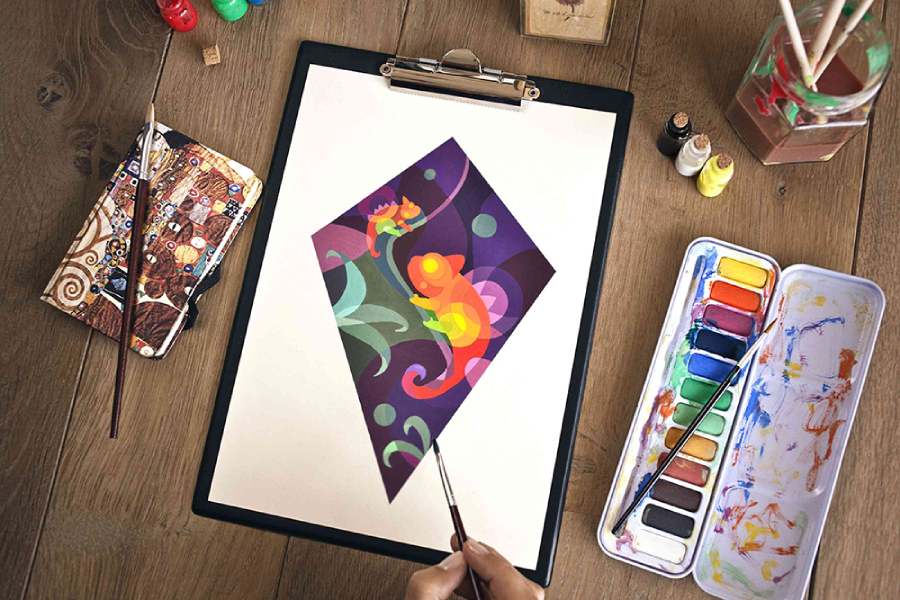
3.6. Join the community and learn from others
Exploring the fundamentals of art is not just about studying alone, but also about interacting, exchanging and learning from the community. Joining design forums, study groups or online courses helps you:
Share and get feedback: You can get valuable feedback from more experienced people to improve your skills.
Look at other people's work: Be inspired by other people's work and learn techniques you may not know about.
3.7. Continue to experiment and innovate
Ultimately, exploring the fundamentals of art is a continuous process. Don’t stop at learning the fundamentals, but keep experimenting and creating. The combination of theory and practice will help you develop your skills and create unique creative works.
Conclude
Fundamental art is not only a toolkit for creating beautiful designs, but also an indispensable part of every designer's career development. By understanding and skillfully applying the basic principles, designers can not only create aesthetic products but also demonstrate sophistication and meaning in their creative work.










































